When it comes to setting up your kitchen, having the right tools at your disposal can make all the difference. From creating culinary masterpieces to whipping up quick meals on busy weeknights, the right essential kitchen equipment can save you time and effort. In this comprehensive guide, we’ll walk you through the top kitchen equipment items you need to have in your culinary arsenal.
1. Knives: The Heart of Every Kitchen
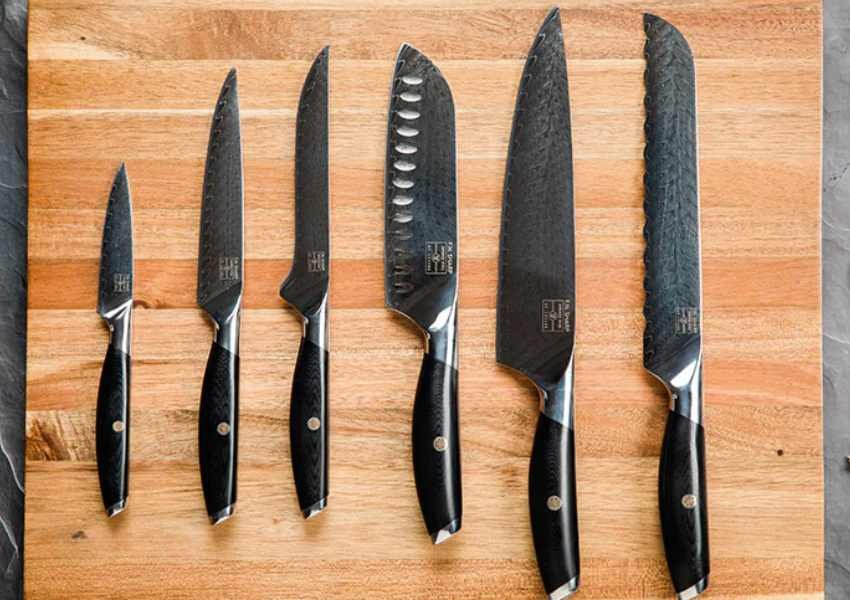
Essential Kitchen Equipment: A Guide to Knives and Sharpeners
If you love cooking, you know how important it is to have the right tools in your kitchen. And one of the most essential tools is a good knife. A sharp and sturdy knife can make your food preparation easier, faster, and safer. But with so many types and brands of knives available, how do you choose the best ones for your needs? And how do you keep them sharp and in good condition? In this blog post, we will answer these questions and give you some tips on how to choose and use the essential kitchen equipment: knives and sharpeners.
The first thing you need to know is that there is no one-size-fits-all knife. Different knives are designed for different purposes and tasks. Therefore, it is advisable to have a few different types of knives in your kitchen, each suited for a specific function. Here are some of the most common types of knives and their uses:
Chef’s Knife
A chef’s knife is the kitchen’s workhorse. Its versatility allows you to chop, dice, mince, and slice with precision. This is the most versatile and widely used knife in the kitchen. It has a long and wide blade that can be used for slicing, chopping, dicing, mincing, and more. It is ideal for cutting meat, vegetables, herbs, and fruits. A good chef’s knife should be well-balanced, comfortable to hold, and sharp enough to cut through food with ease.
Paring Knife
This is a small and narrow knife that is used for peeling, trimming, coring, and slicing small or delicate foods. It is perfect for cutting garlic, shallots, mushrooms, berries, citrus fruits, and more. A good paring knife should be sharp, lightweight, and easy to maneuver.
Serrated Knife
Perfect for slicing bread and delicate items, a serrated knife ensures clean cuts. This is a knife that has a blade with small teeth or serrations along the edge. It is used for cutting foods that have a hard exterior and a soft interior, such as bread, tomatoes, cakes, and pastries. A good serrated knife should have sharp and even serrations that can cut through food without tearing or squashing it.
These are the three basic types of knives that every kitchen should have. Of course, there are other types of knives that you may want to add to your collection depending on your preferences and cooking style. For example, you may want to have a boning knife for removing bones from meat and fish, a carving knife for slicing roasted meats and poultry, or a santoku knife for chopping vegetables in a Japanese style.
But having good knives is not enough. You also need to have a good knife sharpener to keep them in top condition. A dull knife is not only inefficient but also dangerous, as it can slip and cause injuries. Therefore, it is important to sharpen your knives regularly to maintain their edge and performance.
Knife sharpener (sharpening kitchen knives)
Sharpening kitchen knives is critical for safety and efficiency. Invest in a reliable knife sharpener to maintain your blades.
There are different types of knife sharpeners available in the market, such as whetstones, honing rods, electric sharpeners, or manual sharpeners. Each type has its own advantages and disadvantages depending on your skill level, budget, and preference. Here are some of the factors to consider when choosing a knife sharpener:
- Ease of use: You want a knife sharpener that is easy to use and does not require too much time or effort. Some sharpeners are more user-friendly than others, such as electric sharpeners that automatically adjust the angle and pressure of the blade or manual sharpeners that have preset slots for different types of knives.
- Effectiveness: You want a knife sharpener that can effectively restore the edge of your knives without damaging them. Some sharpeners are more effective than others, such as whetstones that can create a fine and smooth edge or honing rods that can realign the edge of the blade without removing any metal.
- Durability: You want a knife sharpener that can last for a long time and does not wear out easily. Some sharpeners are more durable than others, such as ceramic or diamond-coated sharpeners that can withstand frequent use or abrasion.
To summarize, knives and sharpeners are essential kitchen equipment that every cook should have. They can make your food preparation easier, faster, and safer if you choose the right ones for your needs and keep them in good condition. We hope this blog post has given you some useful information on how to choose and use these tools. Happy cooking!
- What is kitchen knife used for?
Ans: A kitchen knife is used for cutting, slicing, chopping, dicing, mincing, peeling and carving various foods in the kitchen. - What is the best kitchen knife available?
Ans: The best kitchen knife available depends on your personal preference, budget and skill level, but some of the top-rated brands are Wüsthof, Shun, Global and Misen. - What are the only 3 kitchen knives you need?
Ans: The only 3 kitchen knives you need are a chef’s knife (for general tasks), a paring knife (for small and delicate work) and a serrated knife (for bread and tomatoes). - What knives do real chefs use?
Ans: Real chefs use different knives for different purposes, but some of the most common ones are gyutou (Japanese chef’s knife), santoku (Japanese multi-purpose knife), petty (Japanese utility knife) and nakiri (Japanese vegetable knife).
2. Cutting Boards: Keep it Clean
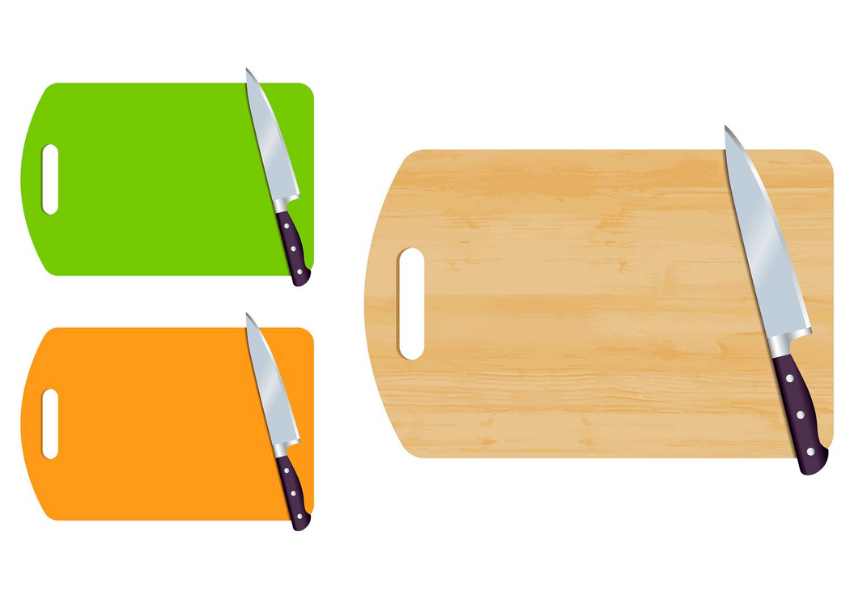
Essential Kitchen Equipment: A Guide to Cutting Boards
If you love cooking, you know how important it is to have a good cutting board in your kitchen. A cutting board is a flat surface that you use to cut, chop, slice, or dice food ingredients. It protects your countertop from scratches and stains, and it also protects your knife from dulling. But with so many types and materials of cutting boards available, how do you choose the best one for your needs? And how do you care for and maintain your cutting board? In this blog post, we will answer these questions and give you some tips on how to choose and use the essential kitchen equipment: cutting boards.
The first thing you need to know is that there are three main types of cutting boards: wooden, plastic, and bamboo. Each type has its own advantages and disadvantages depending on your preference, budget, and hygiene. Here are some of the features and benefits of each type of cutting board:
Wooden Cutting Board with handle
Use the best wooden cutting board with a handle for fruits and vegetables. It’s easy on your knife’s edge and provides a stable surface. This is the most traditional and natural type of cutting board. It is made from hardwoods such as maple, walnut, or cherry. It has a warm and rustic look that can add charm to your kitchen. A wooden cutting board is durable, sturdy, and gentle on your knife. It can also absorb some of the juices from the food, which can enhance the flavor of your dishes. However, a wooden cutting board also has some drawbacks. It can be expensive, heavy, and difficult to clean. It can also warp, crack, or split over time if not properly cared for. It can also harbor bacteria and mold if not sanitized regularly.
Plastic Cutting Board
Dedicate a plastic cutting board to raw meats to avoid bacterial contamination. This is the most modern and synthetic type of cutting board. It is made from polyethylene or polypropylene, which are food-safe plastics. It has a bright and colorful look that can match your kitchen decor. A plastic cutting board is cheap, lightweight, and easy to clean. It can also be dishwasher-safe, which makes it convenient and hygienic. However, a plastic cutting board also has some drawbacks. It can be flimsy, slippery, and noisy. It can also scratch and dent easily, which can create grooves where bacteria can grow. It can also dull your knife faster than a wooden or bamboo cutting board.
Bamboo Cutting Board
Bamboo boards are eco-friendly and durable, making them a great choice for general chopping tasks. This is the most eco-friendly and sustainable type of cutting board. It is made from bamboo, which is a fast-growing grass that does not require pesticides or fertilizers. It has a sleek and elegant look that can complement your kitchen style. A bamboo cutting board is strong, stable, and resistant to moisture. It can also resist bacteria and odors better than a wooden or plastic cutting board. However, a bamboo cutting board also has some drawbacks. It can be pricey, hard, and brittle. It can also splinter or chip over time if not properly cared for. It can also damage your knife more than a wooden or plastic cutting board.
These are the three main types of cutting boards that every kitchen should have. Of course, there are other factors that you may want to consider when choosing a cutting board, such as the size, shape, thickness, handle, groove, or color. For example, you may want to have a large and rectangular cutting board for general purposes, a small and round cutting board for cheese or fruits, a thick and heavy cutting board for meat or poultry, a handle for easy lifting or hanging, a groove for catching juices or crumbs, or a color for differentiating food types.
But having a good cutting board is not enough. You also need to care for and maintain your cutting board to keep it in good condition. Here are some of the tips on how to care for and maintain your cutting board:
People Also Ask: Cutting Boards
- Wash your cutting board after every use with hot water and mild soap. Rinse well and dry thoroughly with a clean cloth or paper towel.
- Sanitize your cutting board regularly with vinegar or bleach solution. Wipe the surface with a cloth soaked in vinegar or bleach solution and let it air dry.
- Oil your wooden or bamboo cutting board occasionally with mineral oil or beeswax. Rub the oil or wax evenly over the surface with a soft cloth and let it soak in overnight.
- Store your cutting board in a cool and dry place away from direct sunlight or heat sources.
- Replace your cutting board when it becomes worn out or damaged beyond repair.
To summarize, cutting boards are essential kitchen equipment that every cook should have. They can make your food preparation easier, safer, and more enjoyable if you choose the right one for your needs and keep it in good condition. We hope this blog post has given you some useful information on how to choose and use these tools. Happy cooking!
People Also Ask: Cutting Board
1. What is the use of cutting board?
Ans: The use of cutting board is to provide a flat and stable surface for cutting, chopping, slicing, or dicing food ingredients.
2. What is cutting chopping board?
Ans: A cutting chopping board is another name for a cutting board, which is a kitchen tool used for food preparation.
3. What type of cutting board is better?
Ans: The type of cutting board that is better depends on your preference, budget, and hygiene. Some people prefer wooden boards for their durability and natural look, while others prefer plastic boards for their ease of cleaning and low cost.
4. Are cutting boards made of plastic?
Ans: Cutting boards can be made of plastic, as well as other materials such as wood, bamboo, composite, or rubber. Plastic boards are usually cheaper, lighter, and dishwasher-safe than other types of boards.
5. How are cutting boards made?
Ans: Cutting boards are made by cutting and shaping the material into a flat and rectangular shape, and sometimes adding features such as handles, grooves, or rubber feet. Some boards are also treated with oil or wax to protect them from moisture and bacteria.
6. What is another name for a cutting board?
Ans: Another name for a cutting board is a chopping board, which is a synonym for the same kitchen tool. Other names for a cutting board are a carving board, a butcher block, or a bread board.
Essential Kitchen Equipment: The Cook’s Essentials
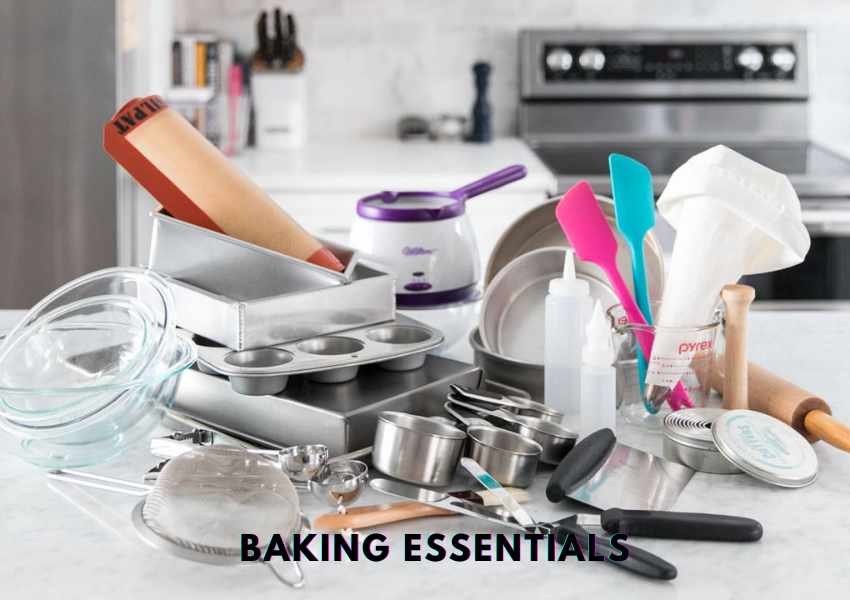
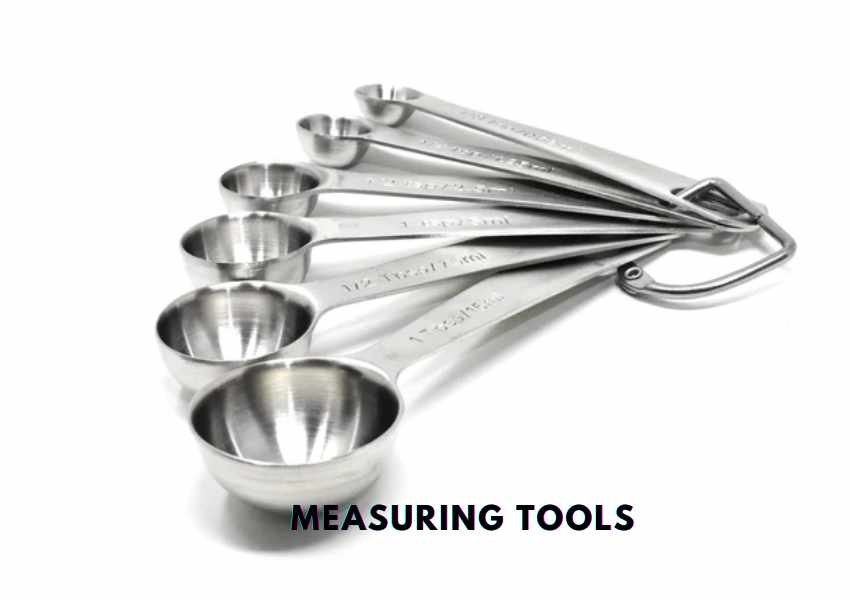
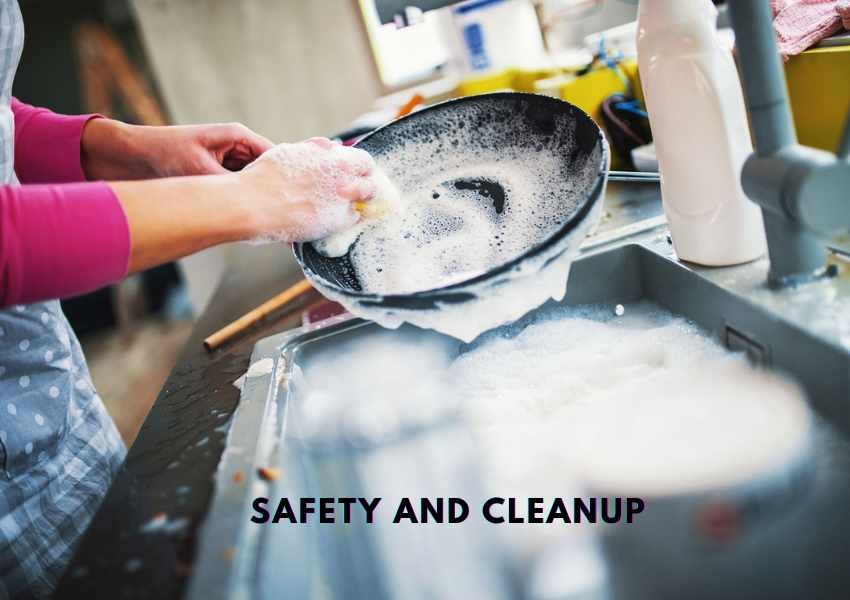

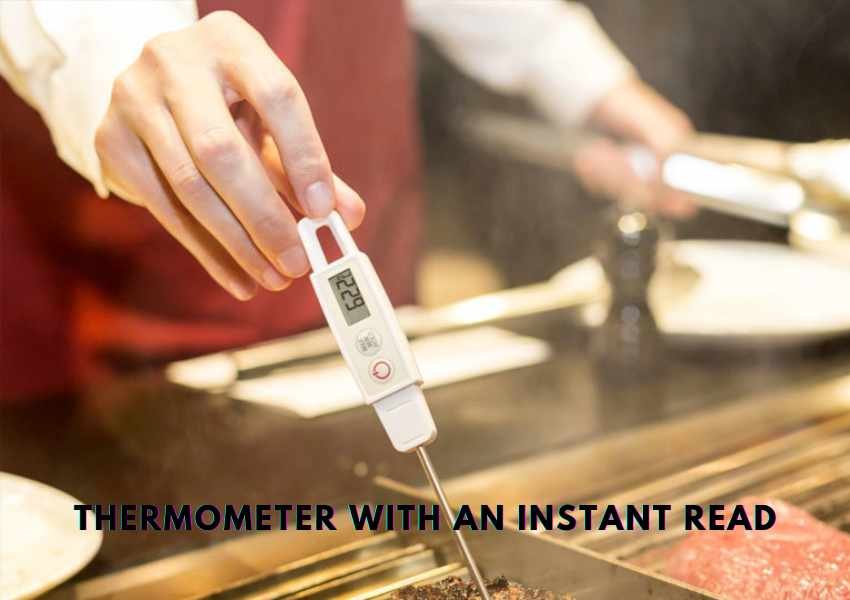

If you love cooking, you know how important it is to have the right equipment in your kitchen. Having the essential kitchen tools and appliances can make your cooking experience easier, faster and more enjoyable. Whether you are setting up a new kitchen or upgrading your existing one, here are some of the essential kitchen equipment you should have.
Pots & Pans: The Cook’s Essentials
Pots and pans are the basic cookware that you need to prepare almost any dish. You should have at least three sizes of pots and pans: a small one for sauces and gravies, a medium one for soups and stews, and a large one for boiling pasta and potatoes.
Some of the most common types of pots and pans are:
- Steel Frying Pan: A steel frying pan is ideal for searing, browning and frying foods. It has a flat bottom and sloped sides that allow you to flip and toss food easily. It can withstand high temperatures and is durable and easy to clean. A steel frying pan is also versatile, as you can use it on any type of stove, oven or grill.
- Saucepan: A saucepan is a round pot with a long handle and a tight-fitting lid. It is used for making sauces, gravies, custards, puddings and other liquid-based dishes. A saucepan can also be used for cooking rice, quinoa, oatmeal and other grains. A saucepan should have a thick bottom and sides to prevent scorching and burning.
- Stock Pot: A wide-bottomed and tall-sided pot is called a stock pot. It is used for making stocks, broths, soups, stews and other large-batch dishes. A stock pot should have a heavy bottom and a sturdy lid to retain heat and moisture. A stock pot can also be used for boiling water, corn, lobsters and other seafood.
Baking Essentials: Sweet and Savory
Baking is a fun and creative way to make delicious treats for yourself and your loved ones. To bake successfully, you need some essential baking equipment that will help you measure, mix, shape and bake your doughs and batters. Some of the most common baking essentials are:
- Baking Dish: A baking dish is a rectangular or oval dish that is used for baking casseroles, lasagnas, pies, cakes and other dishes that require even heating. A baking dish can be made of glass, ceramic, metal or silicone. A baking dish should be greased or lined with parchment paper before adding the batter or filling.
- Baking Sheets: Baking sheets are flat metal trays that are used for baking cookies, biscuits, scones, pastries and other flat or shaped items. Baking sheets can have raised edges or be rimless, depending on your preference. Baking sheets should be lined with parchment paper or silicone mats to prevent sticking and burning.
Measuring Tools: Precision Matters
Measuring is one of the most important steps in cooking and baking, as it ensures that you have the right amount of ingredients for your recipe. Measuring tools help you measure liquids, solids and spices accurately and consistently. Some of the most common measuring tools are:
- Measurement Spoons: Measurement spoons are small spoons that are used for measuring small amounts of ingredients such as salt, sugar, baking powder, vanilla extract and other spices. Measurement spoons come in different sizes such as teaspoon (tsp), tablespoon (tbsp), half teaspoon (1/2 tsp) and quarter teaspoon (1/4 tsp). Measurement spoons should be leveled off with a knife or spatula before adding to the recipe.
- Dry Measuring Cups: Dry measuring cups are cups that are used for measuring dry ingredients such as flour, sugar, oats, nuts and chocolate chips. Dry measuring cups come in different sizes such as 1 cup (c), 1/2 cup (1/2 c), 1/3 cup (1/3 c) and 1/4 cup (1/4 c). Dry measuring cups should be filled to the top and leveled off with a knife or spatula before adding to the recipe.
- Liquid Measuring Cup: A liquid measuring cup is a cup that is used for measuring liquids such as water, milk, oil, vinegar and honey. A liquid measuring cup has a spout for pouring and markings on the side for different units such as milliliters (ml), liters (l), ounces (oz) and cups (c). A liquid measuring cup should be placed on a flat surface and filled to the desired level before adding to the recipe.
Kitchen Gadgets: Handy Helpers
Kitchen gadgets are small devices that make your cooking tasks easier and faster. They can help you peel, chop, slice, open, grate, zest and more. Some of the most common kitchen gadgets are:
- Vegetable Peeler: A vegetable peeler is a tool that has a sharp blade and a handle. It is used for peeling the skin off fruits and vegetables such as potatoes, carrots, apples and cucumbers. A vegetable peeler can also be used for making thin slices or ribbons of vegetables for salads and garnishes.
- Can Opener: A can opener is a tool that has a cutting wheel and a handle. It is used for opening metal cans of food such as beans, tomatoes, tuna and soup. A can opener can be manual or electric, depending on your preference. A can opener should be cleaned and dried after each use to prevent rusting and bacteria growth.
- Vegetable Brush: A vegetable brush is a tool that has stiff bristles and a handle. It is used for scrubbing the dirt and debris off fruits and vegetables such as potatoes, mushrooms, apples and celery. A vegetable brush can also be used for cleaning dishes, pots and pans. A vegetable brush should be rinsed and dried after each use to prevent mold and bacteria growth.
Cooking Utensils: Tools of the Trade
Cooking utensils are tools that help you stir, flip, whisk, scoop and serve your food. They can be made of different materials such as wood, metal, plastic or silicone. Some of the most common cooking utensils are:
- Tongs: Tongs are tools that have two arms that are joined at one end and have a spring mechanism that allows them to open and close. They are used for grabbing, turning and transferring food such as meat, vegetables, pasta and salad. Tongs can have different tips such as scalloped, forked or slotted, depending on the type of food you are handling.
- Whisk: A whisk is a tool that has a long handle and a wire loop at the end. It is used for mixing, beating and aerating liquids such as eggs, cream, sauces and dressings. A whisk can have different shapes such as balloon, flat or spiral, depending on the purpose you are using it for.
- Wooden Spoons: Wooden spoons are spoons that are made of wood. They are used for stirring, mixing and scooping food such as soups, stews, sauces and batters. Wooden spoons are gentle on non-stick cookware and do not conduct heat as much as metal spoons. Wooden spoons should be washed by hand and dried thoroughly to prevent cracking and warping.
- Rubber and Flat Spatula: Rubber spatulas are spatulas that have a flexible rubber head and a long handle. They are used for scraping, spreading and folding food such as cake batter, frosting, cookie dough and whipped cream. Rubber spatulas can withstand high temperatures and do not scratch non-stick cookware. Flat spatulas are spatulas that have a flat metal head and a long handle. They are used for flipping, lifting and transferring food such as pancakes, burgers, eggs and fish. Flat spatulas can also withstand high temperatures and are durable and easy to clean.
Safety and Cleanup: Essentials
Safety and cleanup are essential aspects of cooking that should not be overlooked. They ensure that you avoid injuries, illnesses and messes in your kitchen. Some of the essential safety and cleanup equipment are:
- Pot Holders: Pot holders are pads that are used for holding hot pots, pans and dishes. They protect your hands from burns and scalds when handling hot cookware. Pot holders can be made of fabric, silicone or leather. Pot holders should be thick enough to insulate heat but thin enough to grip cookware.
- Dishcloths: Dishcloths are cloths that are used for washing dishes, pots, pans and utensils. They help you remove grease, food particles and stains from your cookware. Dishcloths can be made of cotton, microfiber or sponge. Dishcloths should be rinsed well after each use and replaced regularly to prevent bacteria growth.
- Dish Towels: Dish towels are towels that are used for drying dishes, pots, pans and utensils. They help you prevent water spots, rusting and mold on your cookware. Dish towels can be made of cotton, linen or bamboo. Dish towels should be absorbent but not too fluffy to avoid lint.
Temperature Control: Precision Cooking
Temperature control is an important factor in cooking that affects the quality, texture and flavor of your food. Having the right temperature can help you cook your food evenly, safely and deliciously. Some of the essential temperature control equipment are:
- Thermometer with an Instant Read: A thermometer with an instant read is a device that measures the internal temperature of food such as meat, poultry, fish and bread. It helps you determine if your food is cooked properly or not. A thermometer with an instant
Equip your kitchen with these essential items, and you’ll be well-prepared to tackle any culinary challenge that comes your way. Whether you’re a seasoned chef or just starting your cooking journey, having the right tools can elevate your culinary creations to new heights.
Essential Food Equipment for Restaurants Welcome Home Decoration Ideas: Crafting a Warm and Inviting Environment

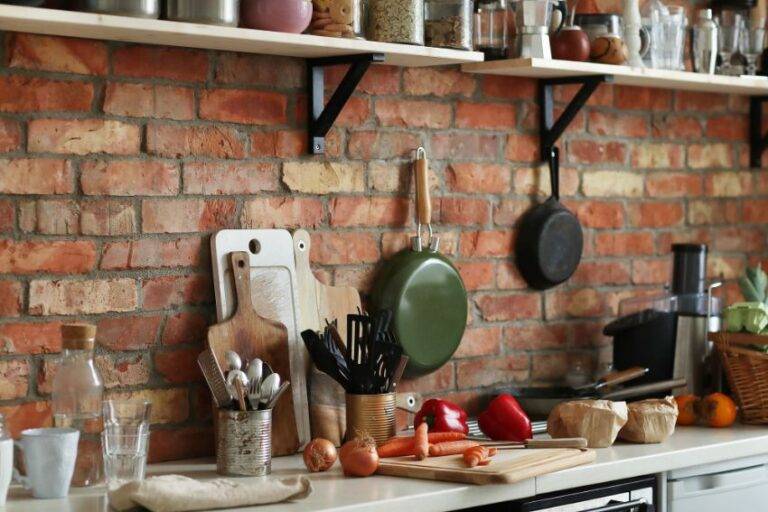
1 thought on “Essential Kitchen Equipment: Accurate Ultimate Guide”
Comments are closed.